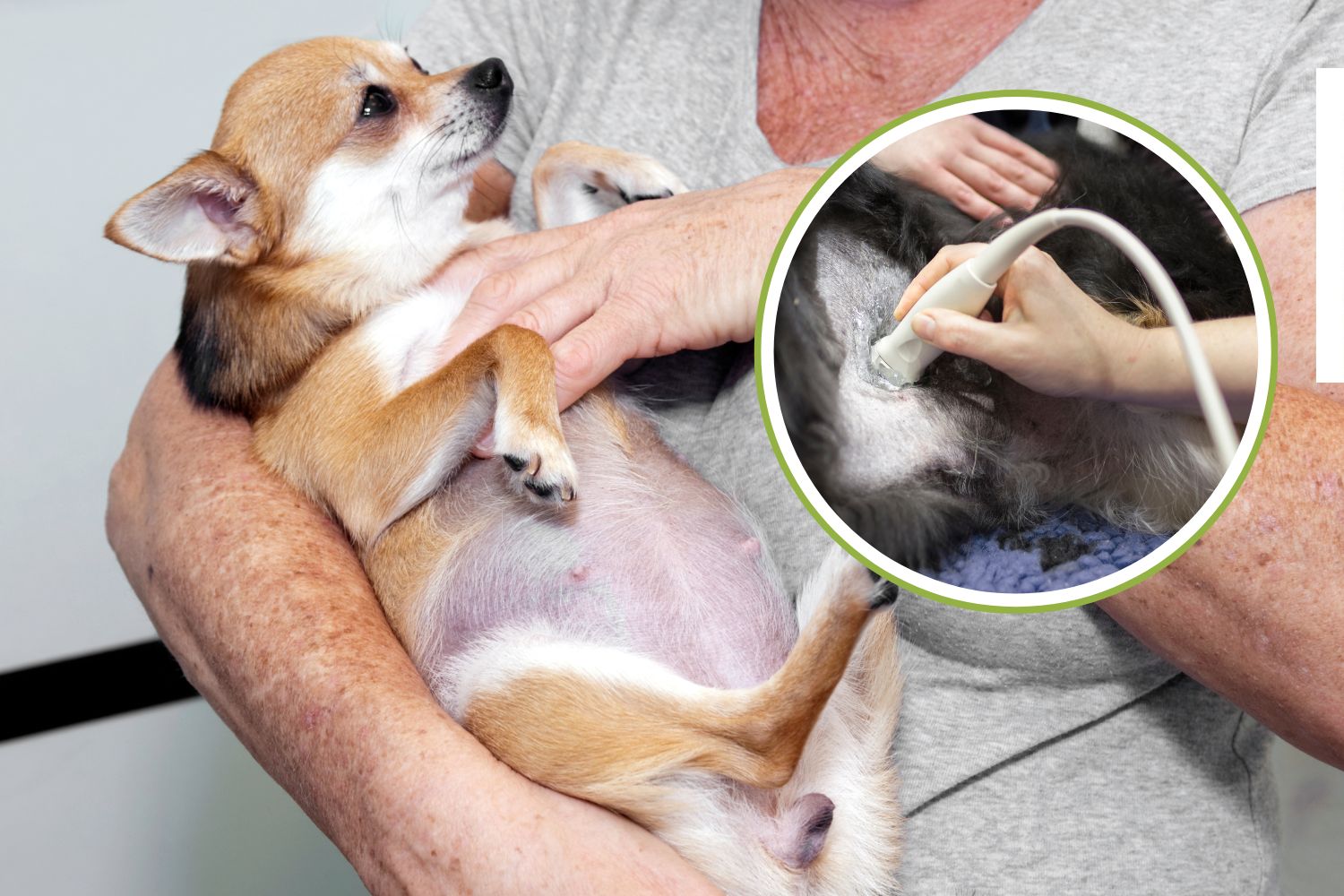Do you have a strong suspicion that your dog is pregnant? These are the dog pregnancy symptoms to watch out for

@Canva
Table of contents
Is your female dog showing a suspiciously swollen belly? Did she go into heat some time ago? Did she escape during her heat cycle? Do you have an intact male dog at home? Well, it’s possible your dog is pregnant. It’s not 100% certain—there are many other causes for a swollen abdomen in female dogs (like obesity, pyometra, ascites, tumors…)—but especially if she shows no other signs of illness, you should also consider the possibility of an unwanted pregnancy.
How long is a dog’s pregnancy?
Let’s start with how long a dog’s pregnancy lasts. For convenience, even veterinarians often say it lasts about 60 days. In reality, though, pregnancy in dogs can last from 57 to 65 days, with an average of around 63 days—a bit over 8 weeks.
The length of pregnancy can vary depending on several factors:
-
Whether it’s the dog’s first litter or she has given birth multiple times
-
The dog’s breed
-
How many puppies are present
An interesting fact is that a female dog can mate with multiple males during the same heat cycle, resulting in puppies with different fathers. This explains why sometimes puppies in the same litter can look quite different. While part of this variability is due to mixed genetics, often it’s because the puppies have different dads in the same litter.
Symptoms of pregnancy in dogs
As an owner, it’s important to recognize the early signs of pregnancy in your dog. This way, you won’t wake up one day surprised by a litter of yapping newborn puppies at your feet.
The problem is that in the first weeks of pregnancy, there aren’t many obvious signs. Usually, clear symptoms appear around 5 to 6 weeks in, when the pregnancy is already advanced. Of course, if you saw your dog mate and stay attached to the male, the chance of pregnancy is high.
From about one month on, here’s what you may notice:
-
Nipples become larger, more swollen, and pinker
-
The vulva may look slightly swollen
-
Occasional mucous discharge from the vagina
By the sixth week, symptoms become more evident:
-
The dog’s belly starts to grow (though this depends on the number of puppies—if there are only one or two, it might not be very noticeable, especially in large breeds)
-
The dog gains weight rapidly (weight gain from obesity is usually more gradual, not this fast)
-
Some dogs eat more to compensate for the nutrients going to the puppies, others eat less due to hormonal changes
-
She tends to become calmer, but not always (some dogs run and jump like nothing is happening even the day before giving birth)
-
Nipples enlarge further and, especially near the end of pregnancy, milk appears
-
The dog starts preparing a nest for the birth by stealing blankets, rags, hiding them in what she considers safe spots—usually under beds, inside closets, or hidden corners—and scratching the floor
-
Regarding mood and behavior, some dogs show no changes, others become more affectionate, and some more nervous
Typical human pregnancy symptoms like vomiting are usually not seen in dogs. If a pregnant dog starts vomiting, the cause could be something else, like gastroenteritis or a spontaneous abortion with uterine infection.
And what about false pregnancy in dogs?
Be careful not to confuse real pregnancy with false pregnancy or pseudopregnancy. In these cases, about 5 to 8 weeks after heat, without mating, you might see the dog’s mammary glands enlarge. In false pregnancy, milk is present. In pseudopregnancy, there is only swelling of the mammary glands without milk.
Both conditions are physiological, linked to the dog’s hormonal system, but no puppies are born because the dog is not actually pregnant.
What to do if your dog is pregnant?
If you suspect pregnancy or see some of the symptoms described above, you should visit a veterinarian to confirm whether your dog is pregnant or if it’s a false pregnancy.
From a diagnostic point of view:
-
Early pregnancy can be detected by ultrasound no earlier than 20 days after mating—before that, nothing is visible.
-
A later diagnosis can be made with X-rays at around 45 days, when the puppies’ skeletons start to ossify. This is often used to count the number of puppies by checking the heads or spinal columns.
If your dog is pregnant, there’s usually nothing to do in the first weeks. Only from the sixth week onwards, when the belly starts to grow, might your vet recommend:
-
Keeping the dog calmer, avoiding unnecessary exertion
-
Starting to supplement her diet with puppy food or special pregnancy-formulated kibble. This helps avoid feeding large volumes that could fill the stomach, which has less space due to the growing puppies
-
Performing periodic ultrasounds to ensure the pregnancy is progressing normally
What if you want to terminate a dog’s pregnancy?
There is an injectable drug that can terminate a dog’s pregnancy. It is recommended to use it in the early stages, so the fetuses can be reabsorbed.
Waiting until a later stage risks inducing an abortion.
After administration, ultrasound checks are needed a few weeks later to ensure the drug was effective and to rule out uterine infection (pyometra).
